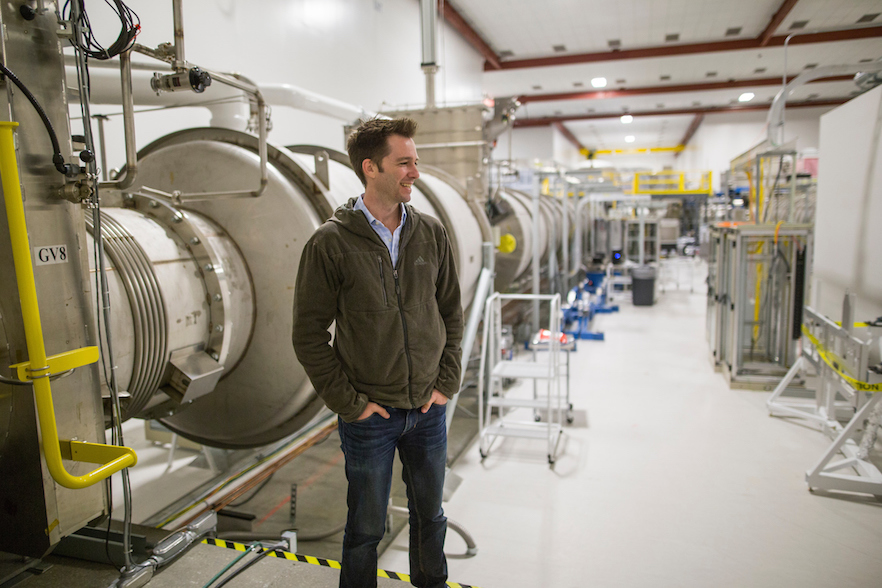Students and faculty celebrate groundbreaking scientific discovery

Forty or so students and professors gathered early this morning to watch a live press conference announcing a cosmic first: the recent detection of gravitational waves caused by the collision of two neutron stars, the latest historic discovery from the Laser Interferometer Gravitational-Wave Observatory (LIGO) and Virgo scientific collaborations. Whitman played a small role in the discovery, thanks to Assistant Professor of Physics Greg Vaughn-Ogin, one of more than 1,000 scientists involved with LIGO and the organizer of the press conference viewing party.
Vaughn-Ogin said that the implications of this breakthrough gave him "literal goose bumps" because it confirmed many of the physics and astronomy communities' theories and predictions.
Officials at the press conference explained that, on Aug. 17 at 8:41 a.m. Eastern Daylight Time, two neutron stars separated by only 200 miles spiraled toward one another, sending out gravitational waves for about 100 seconds. Neutron stars are the densest and smallest stars known to exist. The two stars, each less than 20 km in diameter but between 1.1 and 1.6 times the mass of the sun, then collided and merged into a new object that emitted gamma rays and, in the following days and weeks, electromagnetic signals. While this process had been observed before, this is the first confirmation that neutron stars are its cause.
The gravitational waves were detected by the LIGO interferometers in Hanford, Washington, and Livingston, Louisiana, and then by the Virgo interferometer near Pisa, Italy. Scientists triangulated the data to trace the event to the Hydra constellation, approximately 130 million light years from Earth. Such events are predicted to happen only once every 80,000 years.
"Since neutron stars are a weird, fascinating state of matter that we can't really create on a sub-planetary scale, being able to see and infer details of how physics works in these situations really does have some fundamental implications," said Vaughn-Ogin.
One such implication: Gamma rays, which are known to travel at light speed, reached Earth at almost the same time as the gravitational waves; so gravitational waves must also travel at the speed of light, as Einstein predicted in his general theory of relativity. Another is that electromagnetic emissions after the collision revealed signatures of heavy elements such as gold and platinum. Since scientists have confirmation that the event involved neutron stars merging, this indicates for the first time that neutron stars may be behind the production of half of all the elements heavier than iron, press materials detail.
And the detection lets us better measure the expansion of the universe, according to Vaughn-Ogin. Gravitational waves provide "independent verification of all-optical measurements of cosmic distances and expansion rates," since, unlike light waves, they do not really get deflected, altered or intercepted during transmission to Earth.
After the viewing party, Vaughn-Ogin answered questions about both the discovery and his involvement with LIGO and stressed the importance of involving students in his work.
"Interactions with LIGO—either through my lab where we study the mirror coatings that are key to the operation of the interferometers or through looking at data and glitches that come out of the interferometers in the course of their operation—really expose students to the exciting world of ground-breaking science," he said. "I think that helps them get excited about the field in the same way I'm excited about the field."
On Oct. 3, The Royal Swedish Academy of Sciences awarded Barry C. Barish, Kip S. Thorne and Rainer Weiss the 2017 Nobel Prize for Physics for their work on the LIGO detector and the science of gravitational wave detection.